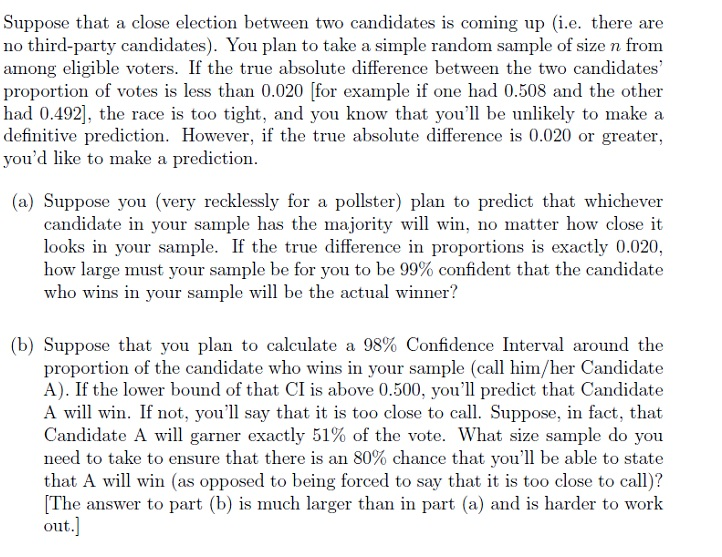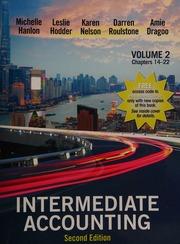
Suppose that a close election between two candidates is coming up (i.e. there are no third-party candidates). You plan to take a simple random sample of size n from among eligible voters. If the true absolute difference between the two candidates' proportion of votes is less than 0.020 (for example if one had 0.508 and the other had 0.492], the race is too tight, and you know that you'll be unlikely to make a definitive prediction. However, if the true absolute difference is 0.020 or greater, you'd like to make a prediction. (a) Suppose you (very recklessly for a pollster) plan to predict that whichever candidate in your sample has the majority will win, no matter how close it looks in your sample. If the true difference in proportions is exactly 0.020, how large must your sample be for you to be 99% confident that the candidate who wins in your sample will be the actual winner? (b) Suppose that you plan to calculate a 98% Confidence Interval around the proportion of the candidate who wins in your sample (call him/her Candidate A). If the lower bound of that CI is above 0.500, you'll predict that Candidate A will win. If not, you'll say that it is too close to call. Suppose, in fact, that Candidate A will garner exactly 51% of the vote. What size sample do you need to take to ensure that there is an 80% chance that you'll be able to state that A will win (as opposed to being forced to say that it is too close to call)? [The answer to part (b) is much larger than in part (a) and is harder to work out.] Suppose that a close election between two candidates is coming up (i.e. there are no third-party candidates). You plan to take a simple random sample of size n from among eligible voters. If the true absolute difference between the two candidates' proportion of votes is less than 0.020 (for example if one had 0.508 and the other had 0.492], the race is too tight, and you know that you'll be unlikely to make a definitive prediction. However, if the true absolute difference is 0.020 or greater, you'd like to make a prediction. (a) Suppose you (very recklessly for a pollster) plan to predict that whichever candidate in your sample has the majority will win, no matter how close it looks in your sample. If the true difference in proportions is exactly 0.020, how large must your sample be for you to be 99% confident that the candidate who wins in your sample will be the actual winner? (b) Suppose that you plan to calculate a 98% Confidence Interval around the proportion of the candidate who wins in your sample (call him/her Candidate A). If the lower bound of that CI is above 0.500, you'll predict that Candidate A will win. If not, you'll say that it is too close to call. Suppose, in fact, that Candidate A will garner exactly 51% of the vote. What size sample do you need to take to ensure that there is an 80% chance that you'll be able to state that A will win (as opposed to being forced to say that it is too close to call)? [The answer to part (b) is much larger than in part (a) and is harder to work out.]







